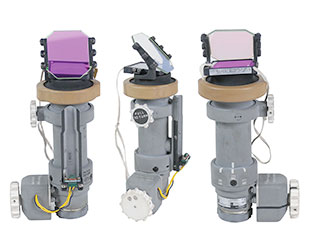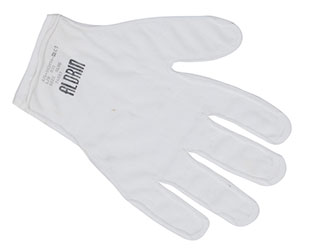May 23, 2014 — The joystick controller used by astronaut David Scott to land Apollo 15's lunar module on the moon 43 years ago this July has sold for more than half a million dollars.
The sale is believed to be the highest price ever paid at a public auction for part of a NASA spacecraft.
RR Auction of Boston sold the spacecraft's rotational hand controller for $610,064 to an unidentified online bidder on Thursday evening (May 22). The record sale was a part of the firm's 7th Space and Aviation Autograph and Artifact Auction, which listed more than 600 aeronautic and space exploration relics and related memorabilia.
The Apollo 15 joystick controller and the crewman optical alignment sight (COAS) from the same spacecraft topped the sale's results. The COAS, which was used by Scott to make star sightings and to align the lunar module with the moon's horizon, sold for $126,180.
Both artifacts were removed from the lunar module Falcon at end of the lander's use, prior to its intentional crash into the lunar surface. Scott and his crewmates, Jim Irwin and Al Worden, returned to Earth aboard the command module Endeavour.

The crewman optical alignment sight (COAS) used by David Scott to fly the Apollo 15 lunar module sold for $126,175. (RR Auction) |
Scott, who as commander led the Apollo 15 mission and was the seventh out of just 12 men to walk on the moon, saved the controller and optical sight as mementos of the historic 1971 flight.
"In many cases, items such as these were abandoned by the crew after use, or lost forever to history as disposable equipment when sent tumbling back to the lunar surface in the spent lunar module to be vaporized upon impact with the surface," Bobby Livingston, executive vice president of RR Auction, said in a statement made prior to the sale.
Both the controller and the COAS were accompanied by a two-page letter written by Scott attesting to the artifact's authenticity and explaining its use. Both items were in his possession since returning to Earth.
"Demand far outstrips supply for truly rare, and unique, lunar surface artifacts from the Apollo lunar landings, and these represent the pinnacle of Apollo-era flown material," said Richard Jurek, co-author of "Marketing the Moon: The Selling of the Apollo Lunar Program" (MIT Press, 2014).
A law passed in 2012 confirmed the Apollo-era astronauts' title to the spacecraft equipment that they returned to the Earth as mementos. The legislation cleared Scott and his fellow moon voyagers to keep, donate or sell the artifacts without legal challenge.

The nylon glove Apollo 11 astronaut Buzz Aldrin could have worn under his spacesuit for comfort sold for $61,212. (RR Auction) |
In addition to Scott's Apollo 15 artifacts, the auction also recorded five- and six-figure prices for artifacts from other missions.
A right-hand nylon "comfort" glove that Buzz Aldrin flew to Tranquility Base on the first ever moon landing, Apollo 11, in 1969 sold for $61,212. A checklist page Aldrin used on the lunar surface commanded $31,409.
The same high bid was fetched for a reproduction of the Declaration of Independence that also flew on Apollo 11, but which remained in orbit around the moon with Michael Collins, the mission's command module pilot.
A strap that held up the life support backpack that Charles "Pete" Conrad wore on Apollo 12 sold for $52,649. And a topographical map used by Eugene Cernan, the last man to walk on the moon, while driving the lunar rover sold for $38,005.
Even hardware that was built for Apollo but which never flew drew spirited bidding. An entry monitoring system that was likely used for training sold for $114,709.
For more details and to view the full list of prices realized, see RR Auction's website.
